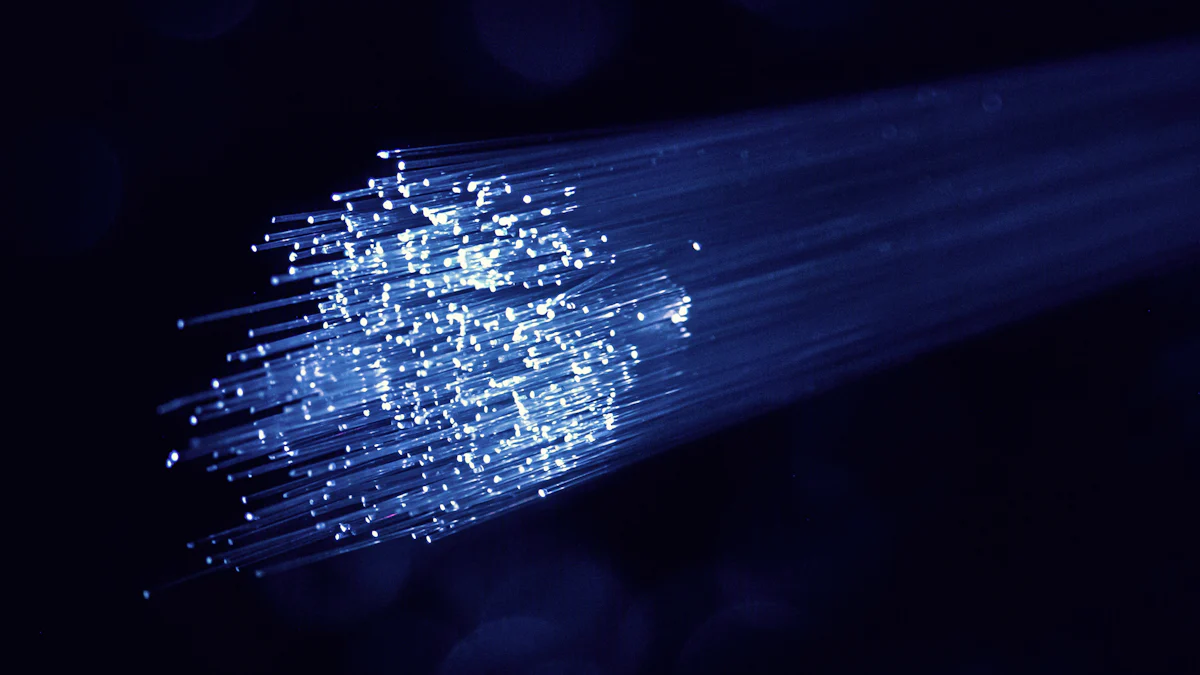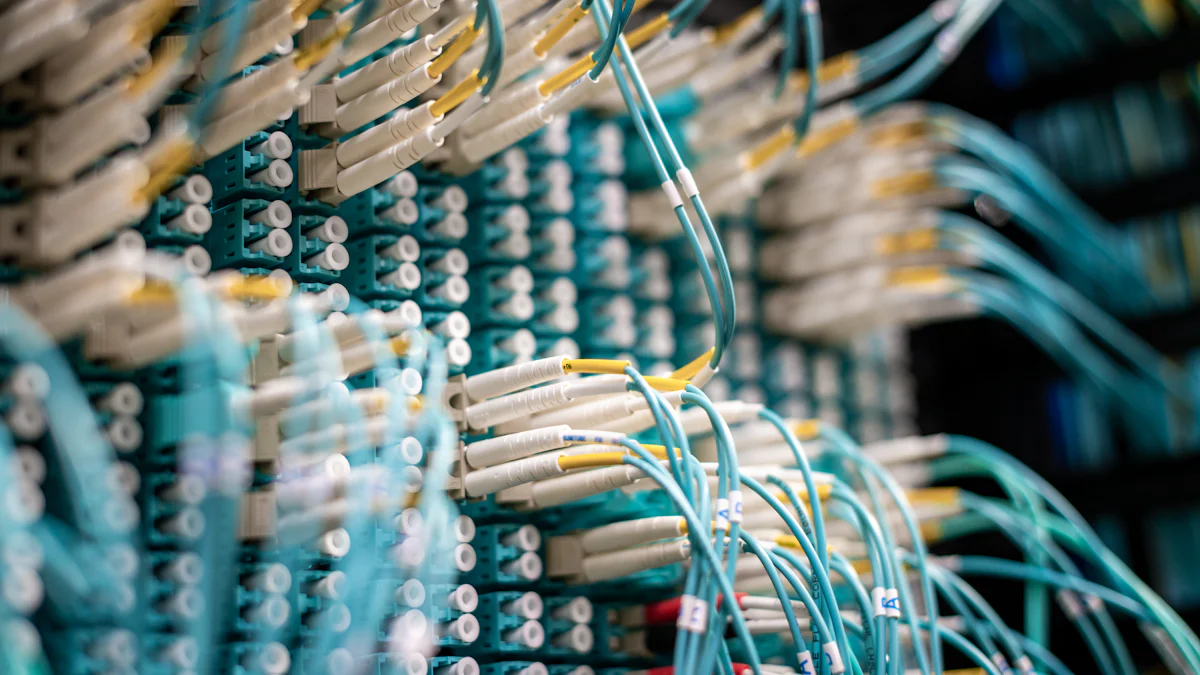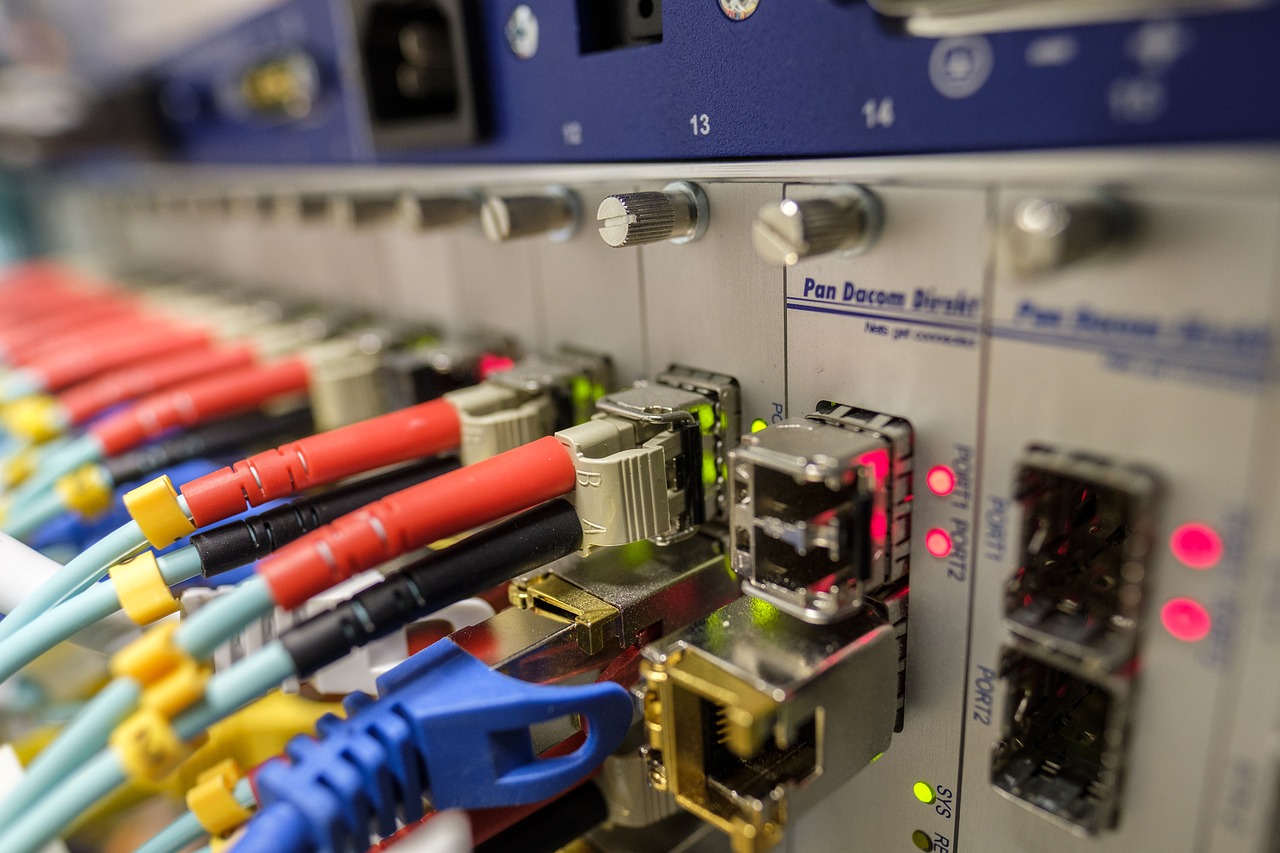Demystifying Fiber Optics: Multimode vs. Single-mode for LAN

In modern networking, the dominance of fiber optics is unquestionable. With over 90.0% revenue share in 2020 and more than 6.4 billion kilometers of cable produced globally, the significance of this technology is evident. Fiber optics play a crucial role in backbone networks, data centers, and telecommunications infrastructure, enabling high-speed data transmission over long distances. This blog aims to delve into the realm of multimode fiber and single-mode fibers, specifically focusing on their applications in Local Area Networks (LAN). By comparing and contrasting these fiber types, readers will gain valuable insights into optimizing their network infrastructures. Multimode fiber, with core sizes such as 50μm core and 62.5μm core, is commonly used in LAN due to its ability to carry multiple light modes simultaneously. LED light sources are often used with multimode fiber for LAN applications due to their cost-effectiveness and reliability. Additionally, laser transmitters can be used with multimode fiber for LAN applications, providing higher bandwidth and longer transmission distances.
Multimode Fiber

Core Sizes
Multimode fiber is known for its larger core sizes, with options such as 50μm core and 62.5μm core. The larger core diameter in multimode fiber allows for the transmission of multiple light modes simultaneously. This characteristic enables the fiber to carry more data over short distances, making it a popular choice for Local Area Networks (LAN).
Light Sources
When it comes to light sources for multimode fiber, LED light sources and laser transmitters play crucial roles. LEDs are cost-effective and reliable options commonly used with multimode fiber in LAN applications. On the other hand, laser transmitters offer higher bandwidth capabilities and longer transmission distances, enhancing the overall performance of multimode fiber networks.
Applications in LAN
In LAN environments, multimode fiber offers distinct advantages and has certain limitations to consider:
Advantages:
Cost-effective solution for short-range connections within LAN setups.
Ability to support various network speeds and protocols efficiently.
Suitable for high-traffic networks where multiple data streams are transmitted simultaneously.
Limitations:
Limited transmission distance compared to single-mode fiber.
Susceptible to modal dispersion issues that can affect signal quality over long distances.
Bandwidth limitations may impact performance in high-demand scenarios.
By understanding these aspects of multimode fiber, network administrators can make informed decisions when designing or upgrading LAN infrastructures.
Single-mode Fiber

Core Size
Around 9μm Core
Single-mode fiber, with its core size typically around 9μm, stands out for its ability to allow only a single ray of light to pass through. This characteristic sets it apart from multimode fiber, which has a much larger core diameter, enabling multiple light modes to be propagated. The smaller core size of single-mode fiber ensures precise and efficient transmission of data over long distances, making it the preferred choice for applications requiring high-speed and reliable connectivity.
Light Sources
Laser Transmitters
When it comes to light sources for single-mode fiber, laser transmitters play a pivotal role in ensuring optimal performance. Laser transmitters are specifically designed to work with the narrow core of single-mode fiber, providing highly focused and powerful light signals that can travel extended distances without signal degradation. This focused transmission is essential for maintaining data integrity and minimizing signal loss in long-haul communication networks.
Applications in LAN
Advantages
Limitations
In Local Area Networks (LAN), single-mode fiber offers distinct advantages that cater to specific networking requirements:
Advantages:
High Bandwidth Capacity: Single-mode fiber provides significantly higher bandwidth compared to multimode fiber, making it ideal for supporting high data rates over extensive network infrastructures.
Long Transmission Distances: Due to its smaller core size and reduced signal attenuation, single-mode fiber can transmit data over much longer distances without requiring signal regeneration or amplification.
Low Signal Loss: The focused transmission of laser light in single-mode fiber minimizes signal loss along the optical pathway, ensuring reliable and consistent data delivery across the network.
Limitations:
Cost Considerations: Implementing single-mode fiber infrastructure can be more expensive initially due to the specialized components required for laser-based transmissions.
Installation Complexity: The precision needed for splicing and connecting single-mode fibers demands skilled technicians and specialized equipment, potentially increasing installation time and costs.
Compatibility Issues: Upgrading existing LAN setups to utilize single-mode fiber may pose compatibility challenges with legacy networking equipment designed for multimode fiber connections.
By carefully considering these advantages and limitations of single-mode fiber in LAN environments, network administrators can make informed decisions regarding network upgrades or expansions that align with their specific performance needs and budget constraints.
Choosing the Right Fiber
When deciding on the appropriate fiber type for a network, several critical factors must be taken into account to ensure optimal performance and cost-effectiveness. Distance plays a pivotal role in determining whether single-mode or multimode fiber is the better choice for the network infrastructure. For longer distances exceeding 550 meters, single-mode fiber is highly recommended due to its superior transmission capabilities over extended ranges without signal degradation. On the other hand, multimode fiber is suitable for shorter distances within LAN environments where cost efficiency is a primary concern.
Considering the bandwidth requirements of the network is essential in selecting the right fiber type. Networks with high data rates and extensive bandwidth demands are better served by single-mode fiber, which offers significantly higher bandwidth capacity compared to multimode fiber. Single-mode fibers can efficiently support high-speed data transmission over long distances without compromising on performance or reliability. In contrast, networks with moderate bandwidth requirements and shorter transmission distances can benefit from utilizing multimode fiber, providing a cost-effective solution for fulfilling their networking needs.
Network administrators must also evaluate the cost implications associated with deploying either single-mode or multimode fiber infrastructures. While single-mode fibers offer unparalleled performance benefits for long-distance applications, they come with higher initial setup costs due to specialized components required for laser-based transmissions. On the other hand, multimode fibers present a more budget-friendly option for LAN setups with shorter transmission distances, making them an attractive choice for organizations looking to balance performance and affordability in their network investments.
To ensure the longevity and scalability of network infrastructures, it is crucial to consider future-proofing strategies when choosing the right fiber type. Opting for single-mode fibers can future-proof networks by accommodating potential growth in data traffic and evolving technology standards over time. The inherent high bandwidth capacity and extended transmission distances of single-mode fibers make them well-suited for adapting to future network expansion requirements without significant infrastructure upgrades.
Recapping the essential points, multimode fiber with its larger core sizes is ideal for short-distance LAN connections, offering cost-effective solutions and supporting various network speeds efficiently. On the other hand, single-mode fiber stands out for its high bandwidth capacity and long transmission distances, making it suitable for extensive network infrastructures. For LAN applications, considering the specific networking requirements is crucial in determining the most appropriate fiber type. Looking ahead, future developments in fiber optics, such as Optical LAN (OLAN) and Campus LAN Backbone technologies, are set to revolutionize LAN applications using fiber optics.
See Also
Contrasts of Single-Mode vs. Multimode Fiber Optic Cables
Single Mode Transmission Fiber Optic Cables Selection
Selecting the Perfect PLC Optical Splitter for Single-Mode Fiber Network
Comprehending 12 Fibers LC/UPC Single-Mode Fiber Optic Pigtail


